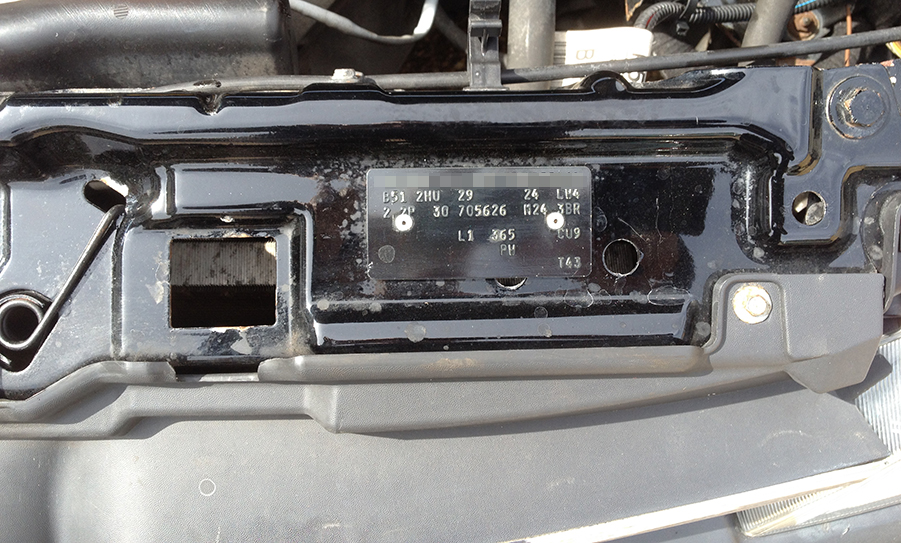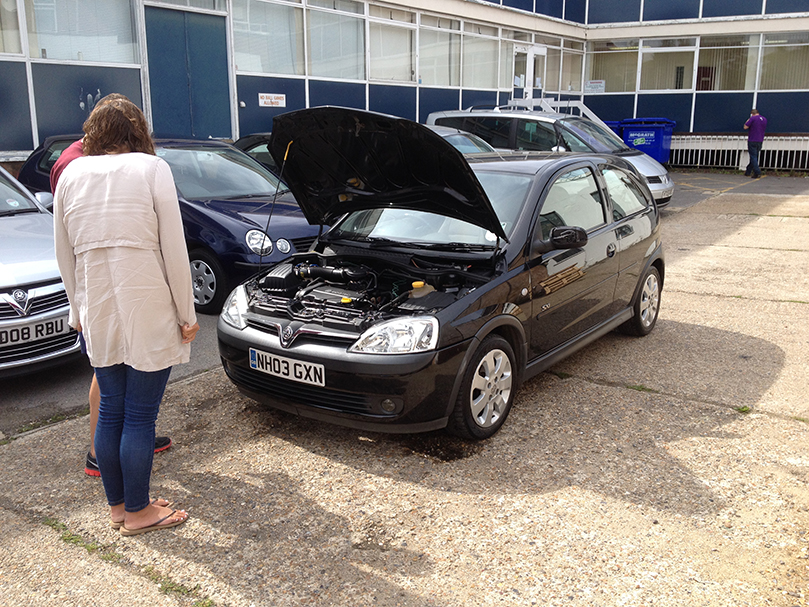How to go about inspecting a teenager's first car
So much for the theory…

EACH WEEK, 6,000 teenagers pass their driving test in the UK which means that, whether they like it or not, a lot of mums, dads, partners and friends suddenly have to become experts at helping them buy their first car.
Recently, Driving was asked to help first-time buyer, Emmalyne. The 19-year old had passed her test a few weeks earlier and had her heart set on a Vauxhall Corsa, costing £1,500.
The advertisement for the car had described it as having a full service history and a three-month warranty. Emmalyne and Rupert, her boyfriend, had gone to see it and, after a short test drive, decided to buy it. They asked Driving to join them at the dealership to oversee the handover.
Two days later, we found ourselves standing in a scruffy parking area enclosed by derelict offices. A man, who Emmalyne and Rupert did not recognise from their earlier visit, appeared from behind a parked car and said he would get the Corsa from an underground car park nearby. Intrigued, we followed him into a gloomy basement area under one of the offices from where he extracted the Vauxhall and drove it into the daylight. Driving sprang into action, determined to find fault with it.
Initial inspection

The 80,000-mile, 2003-registered SXi three-door looked smart enough but kneeling in the dust and squinted along its sides we could see numerous small dents. Nothing serious, and to be expected at this age, but they indicated less than studious ownership.
Next, we checked for that orange peel effect associated with a poor respray. Sure enough, there were patches of poorly applied paint around the car’s wings and waistline. Peeling back the door rubbers, we checked for overspray. Surprisingly, there was none. We then checked the door sills and the area where the A-pillars (the posts at the edge of the windscreen) meet the roof. We were looking for any signs of welding where the car may have been created from two crashed vehicles. Again, no sign and no cause for alarm.
The car’s grey interior looked tired and the handbrake sleeve was torn, but the driver’s seat felt like it still had life in it and the mats were the original Corsa-branded ones, which suggested someone may once have taken pride in the little car. We opened the boot lid, lifted the carpet and checked for paint and buckling that might point to a rear-end smash. Yet again, clean as a whistle.
The engine bay
We opened the bonnet and saw that the engine had, unfortunately, been steam cleaned, washing away any possible oil leaks. We dipped the oil (clean and a good level) and unscrewed the oil filler cap. We were looking for what the motor trade calls “mayonnaise”; a white emulsion caused by oil and coolant water that can collect on the cap and around the filler neck. It was clean.
And then we saw something that threatened to consign this particular Corsa to the dustbin.
The car’s slam panel ‒ the strip of metal that sits between the front wings and which the bonnet latches to ‒ looked as if it might be new, while the paint on one of the front wings, where it was bolted to the car, was paper thin and flaking off, suggesting it, too, may have been changed. Finally, the VIN (vehicle identification number) plate fixed to the slam panel appeared to be attached by new rivets. Of course, if the slam panel had been replaced, perhaps following an accident, it would be.

The trouble is, a VIN plate is not a thing you tamper with lightly. Think of it as the car’s fingerprint. It carries a number, often a mix of 17 digits and letters, that is unique to the vehicle, and that also appears on the car’s V5C, or registration document, so you know the car is straight.
We considered two possible explanations: it had simply been transferred to the new slam panel (assuming it was new; neighbouring components such as the radiator and front bumper looked original and were correctly aligned), or it may have been put there by a “ringer”; a crook who steals a car and gives it the identity of an identical model that has not been recorded as stolen or written off in an accident. To disguise the car’s true identity still further, he could have ordered a replacement V5C relating to the “clean” car.
Guaranteeing the car’s history
We advised Emmalyne to call HPI, a vehicle records service, to check the car’s history. The check cost her £20 but showed that the car was clear on all of HPI’s 13 registers (they include previous mileage readings where known, whether there is an outstanding loan recorded against the vehicle, whether it has been recorded as stolen and whether it has been written off). The car’s description and VIN number matched HPI’s records. The Corsa seemed to be genuine and crucially, had never been written off.
Except that cars usually have more than one VIN plate and, occasionally, crooks forget to change them all. So, really, we should have looked for other VIN plates on the car to crosscheck their numbers. However, our obsession with the VIN plate was beginning to frustrate Emmalyne and Rupert who, by now, were consulting their watches…
We checked the car’s paperwork. The V5 bore the same identification number as the VIN plate, and the vehicle description was correct. It also showed the car had had five previous keepers, not uncommon for a model popular with first-time drivers. But those unseen VIN plates still bothered us. What if the V5 we were looking at related to another, but identical-looking, Corsa?
The advertisement had described the Corsa as having full service history yet the service booklet lacked any official stamp or vehicle details linking it to the car, while the first service appeared to have been done three years after the Corsa’s first registration date. Thereafter, all services had been done on time, and by Vauxhall dealers. The mileage recorded against the latest service was in line with the mileage reading on the car’s odometer, while the mileages given with three earlier services in the booklet tallied with those recorded on HPI’s database.
The clincher

What to do under the circumstances? We took the Corsa for a test drive, of course. It performed well enough and was just as Rupert had reported following an earlier spin: “Sound as a pound.”
The salesman threw six months’ road tax into the price, and the car came with 12 months’ MOT. As far as Emmalyne was concerned, he had a deal and we didn’t stand in the way.
Living with the car
Three weeks into her ownership of it and the Corsa is proving to be a good runner. Emmalyne insured herself through Tesco Bank Box, a policy that relies on her having a black box fitted to the car that records her driving style. The policy’s annual mileage limit is 6,000, but this rises by 200 miles each month if Emmalyne’s driving is up to scratch. There are no other restrictions and no curfews. Her premium was £900, including supply and fitting of the black box, and her excess is £200.
The girl done well but we regretted not looking for the car’s other VIN plates, assuming there was more than one. And what was the story with the service history? But Emmalyne and Rupert had made up their minds: the price was right and the car drove well. Touch wood, it will continue to be reliable. For all our checks, there’s still some truth in the idea that, when buying a budget used car, only time will tell whether it’s a minter ‒ or a stinker.




